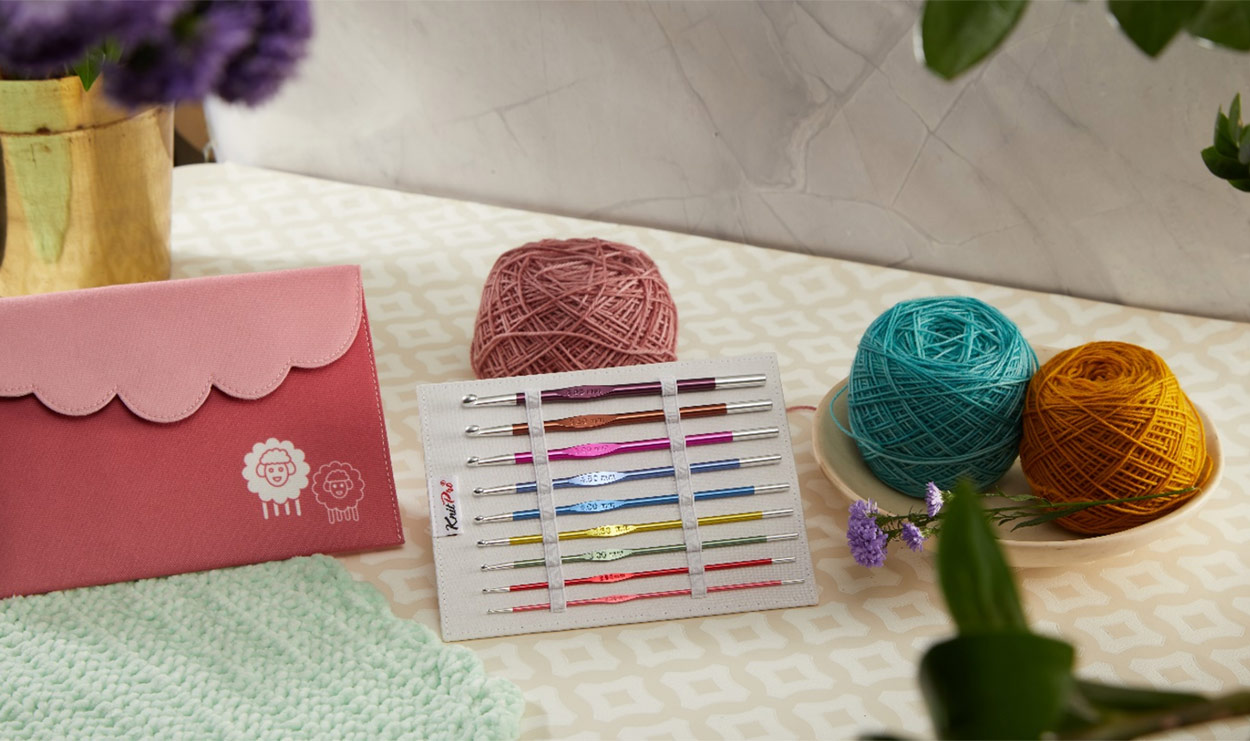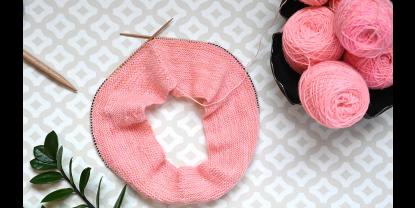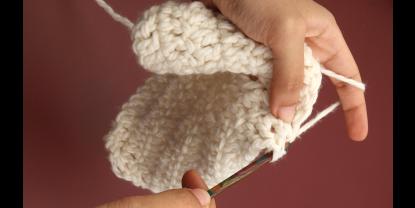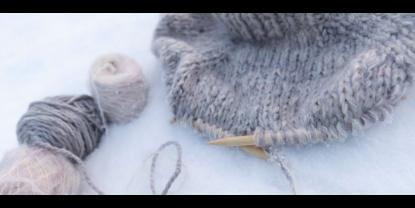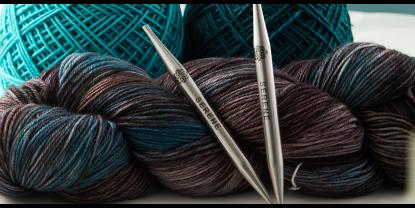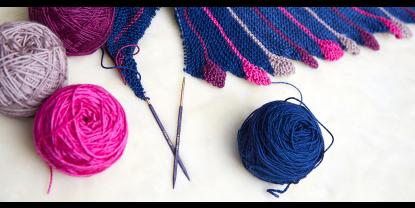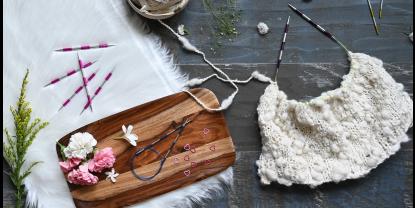Sometimes while working with yarn and knitting needles, a crochet hook comes handy. This little fling... with a crochet hook does not impact your real love, the knitting needles. From adding a border, fixing a dropped stitch, or starting a cast-on, crochet techniques have a useful place in a knitter’s toolkit. It's not cheating, it’s being resourceful. Purist knitters may not agree, but this blog will discuss crochet techniques that are of great help and use in knitting projects.
Knitting and crocheting are often treated like rival crafts, with an age-old debate on what is good for beginners, what is easier and what to choose for particular projects. Refer to our previous blog on knitting vs crocheting. However, there’s no need to choose one, especially when both can work beautifully together! The number of knitters cum crocheters are quite a rising number. In fact, more and more knitters are discovering that a simple single-ended crochet hook can be a secret weapon in their knitting toolkit.
Why Knitters Use Crochet Techniques
Crocheting is different from knitting, however similar in various ways. Knitters use crochet techniques as in comparison it’s quicker, easier, stitch formation and neatness. Even if you’ve never picked up a crochet hook before, don’t worry. These techniques are beginner-friendly, and once you try them, you might find yourself reaching for your hook more often than you think. From cast on with a crochet hook to a crochet bind off, knitters have been using crochet for many of their projects.
1. Slip Stitch Crochet for Finishing and Fixes
Slip stitch crochet is the knitter’s favorite crochet hack. It’s the simplest of all crochet stitches and involves pulling a loop through another loop—no yarn overs or complicated patterns.
Why the Slip Stitch in Crochet is handy for knitters? Well, sometimes, knit patterns get a little loosey-goosey at the edge, a quick row of slip stitch crochet can neaten things up in no time. It’s also perfect for turning the hem on a knitted garment.
2. Seaming with a Crochet Hook
Do you dread the laborious mattress stitch or other seaming techniques? Crochet hooks come in as a savior for seaming pieces together, especially when assembling sweaters, blankets, or patchwork-style projects.
Why seaming a knitting project with crochet hooks work? The reason is that it’s faster and easier to see what you’re doing. You get more flexibility and stretch and also the smooth seam lies flat. One common method is to use a slip stitch or single crochet stitch to join edges. Take a look at the single crochet stitch technique and its variations. This creates a decorative ridge or invisible seam, depending on how it’s done. Some knitters prefer the crochet join for its durability and clean look, especially in bulky yarns.
3. Shaping Necklines and Armholes
Need to shape a neckline or armholes after you are done? No need to pick stitches back as with a few rounds of single or half-double crochet stitch (HDC) can neaten and stabilize necklines, armholes, or cuffs, especially on garments made from soft or drapey yarns. As compared to needles, your crochet hook offers a bit more precision, which is helpful in shaping. Plus, crochet has a tendency to be stiffer with definition, which works for these areas.
4. Crochet Colorwork Embellishments
Colorwork in knitting, intarsia, stranded, Fair Isle, or Mosaic are beautiful but also complex techniques. What if you could add pops of color to your project? Crochet comes in handy! Surface slip stitch and chain stitch embroidery allow you to outline patterns, shapes, or designs directly on your knitted fabric. With crochet colorwork, add decorative borders, write names or initials on gifts and draw freeform designs. This approach is especially fun for personalizing accessories.
5. Edgings and Borders with a Hook

One of the most beautiful and practical uses of crochet in knitting is creating edgings and borders. Whether you're finishing off a baby blanket or trimming a shawl, a crocheted edge adds charm and polish. You can work bind off and then continue with a decorative edge of picots or Shell stitch. A popular option is Crab stitch (reverse single crochet) for a corded edge. These edgings not only look great, but they also prevent curling and reinforce wear-prone areas like cuffs, hems, and necklines.
Now that you know about crochet techniques that come in handy for knitting projects, all you have to do is get a crochet hook. The rule is to choose a size matching the knitting needles used in the project. Also, choosing a same or similar material is recommended. For basic crochet techniques, explore beautifully crafted crochet hooks that knitters love for their smooth glide and comfortable grip. Keep one in your project bag, you’ll be surprised how often it comes in handy.
So, whether it’s knitting or crocheting or both, KnitPro offers tools that support crafting. Explore the range of knitting needles, crochet hooks and accessories.


